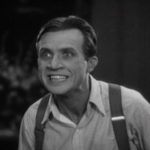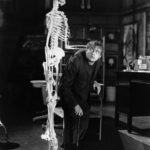Have you ever been to a party where everyone was talking about Frankenstein and you felt excluded because you didn’t know any incredibly useful facts about The Modern Prometheus?
Of course, you have. I know this because I definitely have a lot of friends and am always attending very fancy parties.

This spooky season, I’ll be giving you fifty #FrankenFacts that will turn even the most desolate wretch into an eloquent creature worthy of compassion from their creator.
Let’s go!
1. What's in a Name?
Let’s just get this one out the way so I don’t get any angry comments. It is perfectly fine to call The Monster “Frankenstein.”
Calm down, Monster Squad, I know Frankenstein is the guy, not the monster. But parental responsibility is a large theme of the original novel. The monster sees himself not just as Victor’s creation, but as his son. So it makes complete sense that he would also be named “Frankenstein.”
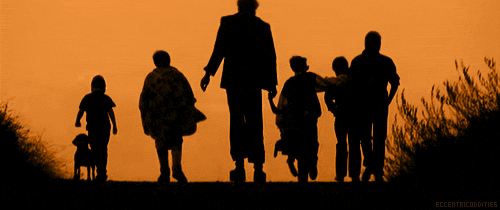
If you really want to get hung up on titles, maybe focus on the fact the “Doctor” Frankenstein never finished college.
2) And the Winner Is...
As the legend goes, a nineteen-year-old Mary Shelley crafted the macabre tale of Frankenstein on a dark and stormy night while having a writing competition with friends to see who could create the most terrifying story.
Competing with Mary was her poet husband, Percy Shelley, as well as Lord “She walks in beauty, like the night” Byron, and John Polidori, whose work “The Vampyre” would later inspire Bram Stoker’s “Dracula.”

3) Burg Frankenstein
Shelley took inspiration from many places, one of which is the very-real Frankenstein Castle that fascinated her while traveling across Europe. Frankenstein Castle can be found in the mountains of Germany, overlooking the city of Darmstadt.
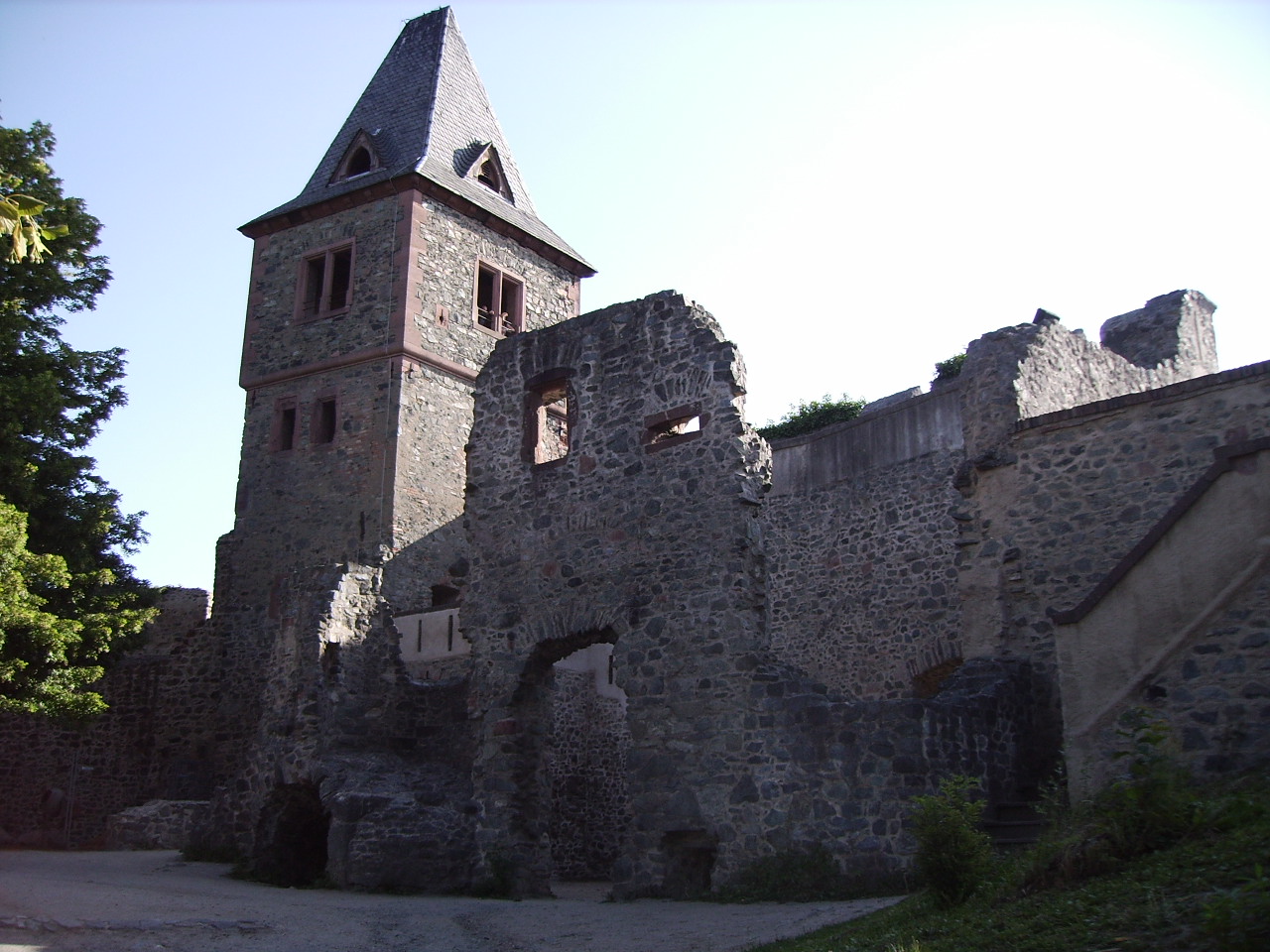
By Pascal Rehfeldt – Own work, CC BY-SA 3.0, https://commons.wikimedia.org/w/index.php?curid=912241
Once home to an alchemist who theorized that souls could be transferred between dead bodies with the aid of a funnel, the legendary castle is now home to an annual Halloween attraction.
It’s like a Halloween Horror Nights that you have to hike to.
4) The Birth of Sci-Fi

Shelley’s novel “Frankenstein; or, The Modern Prometheus,” was published in 1818 and is considered the first example of science fiction literature.
However, it took her a while to get the credit she deserved.
5) Apparently it Wrote Itself
When the novel was first published, it was done so anonymously. I’ll give you one guess why Mary’s name wasn’t on it.
Sexism. The answer is sexism.
Mary wasn’t credited until the second edition, and only after Presumption; or, the Fate of Frankenstein had become a successful stage play.
Obviously, this would be the first of many adaptations – to varying degrees of quality.

6) The Burlesque Show

In 1887, the novel was adapted into the musical burlesque Frankenstein, or The Vampire’s Victim. It flopped hard and closed after only one week.
Considered by many to be too “feminist” for the time, it didn’t help that the production deviated wildly from the source material (as the title may imply.)
I’d still like to see it though.
7) Frankenstein's First Flick
Universal’s adaptation of Shelley’s novel is undeniably the most iconic, but they weren’t the first ones to give Frankenstein’s monster his very own movie.
That honor goes to Edison Studios, who produced a silent adaptation in 1910.
But if you know anything about Edison, Nikolai Tesla probably did it first and Edison just sent his goons to steal it.
Silent film star Charles Stanton Ogle would be the first person to portray the monster on film.

8) Creatures of the Night
In the early 1930’s, Universal Studios was struggling financially. Carl Laemmle Jr. – then head of production – took a gamble and pivoted from Universal’s strategy of of focusing on prestige pictures and opted to make a small horror story based on a play that was based on a book.
1931’s Dracula was an instant success, and since Hollywood hasn’t changed much in a hundred years, Laemmle moved quickly to churn out more spooky stories.
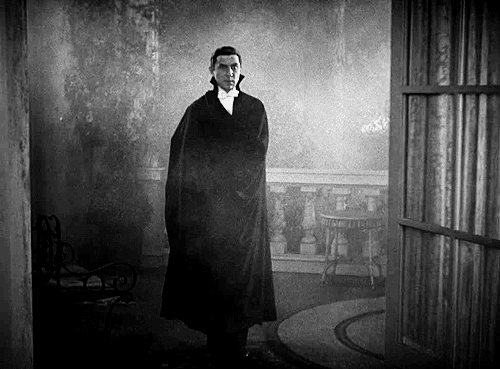
His next movie would be Frankenstein.
9) The Original Monster
Bela Lugosi lobbied to play Dr. Frankenstein, but Carl Laemmle wanted to capitalize on the mystique Lugosi had created playing Dracula and insisted he be cast in the role of The Monster. After several disastrous make-up tests, Lugosi left the project.
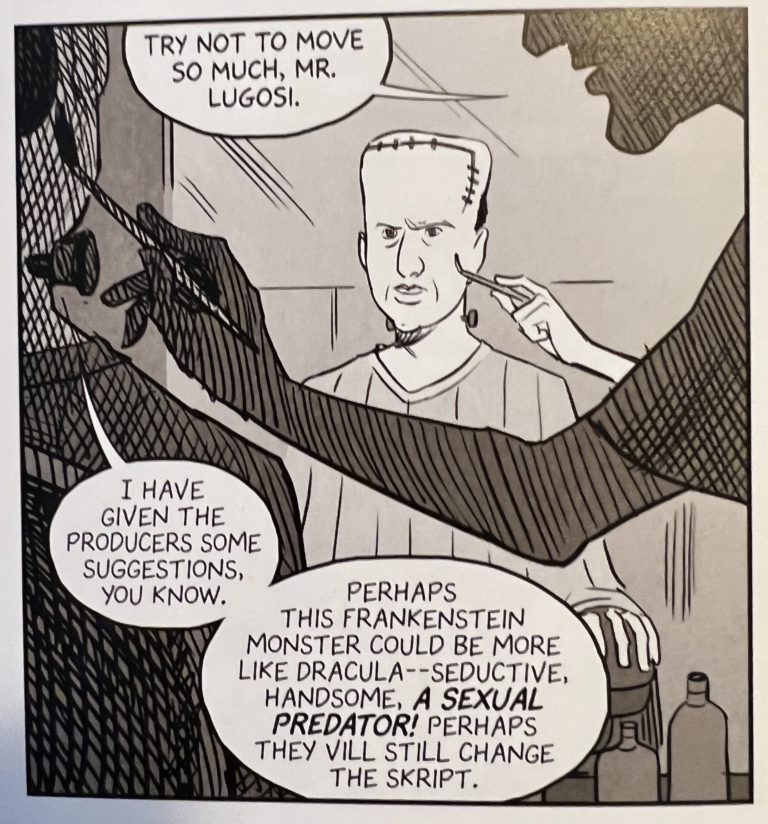
From the graphic novel “Lugosi” by Koren Shamdi.
However, he did return two films later for Son of Frankenstein in the role of “Ygor,” and eventually played The Monster in Frankenstein Meets The Wolf Man.

Bela Lugosi as “Ygor” in Son of Frankenstein (1939)
10) Ygor? Never heard of him.
“Oh, Igor. That’s Frankenstein’s hunchbacked assistant, right?”

Three movies in (and 121 years after the book) this is the first appearance of someone named named Ygor (or Igor) in the Frankenstein mythoi. And he’s not Dr. Frankenstein’s assistant either. Nor is he a hunchback.
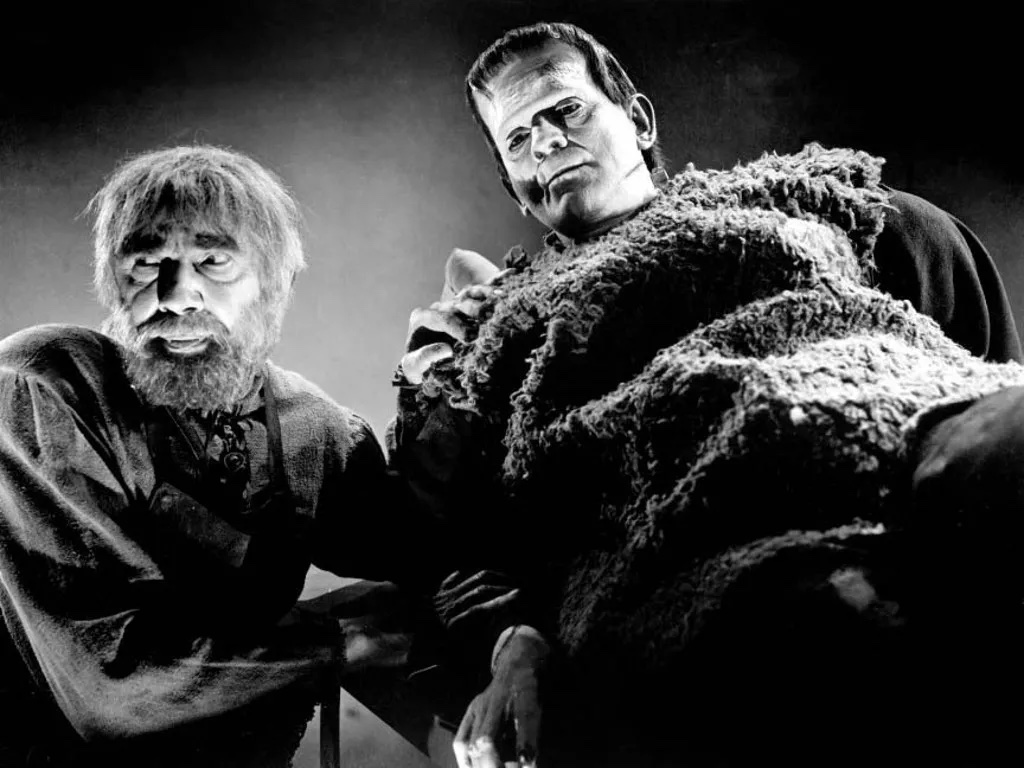
Ygor and The Monster (Son of Frankenstein, 1939)
But you’re sure Frankenstein had a hunchbacked assistant named Igor, right? That’s in all of our collective consciousness. Well, chalk that one up to the Mandela Effect I guess because the character never existed.
In the original novel, Frankenstein had no assistant, and in the 1931 film, the hunchbacked assistant who accidentally grabs the wrong brain was named “Fritz.”
11) Double-Duty
“Fritz” would be played by character actor Dwight Frye, who portrayed another servant to a monster earlier in the year as the bug-eating “Renfield” in Dracula.
One of Frye’s co-stars in that film was Edward Van Sloan, who played the wise mentor figure, “Abraham Van Helsing.” He also joined the cast of Frankenstein, playing the wise mentor figure, “Doctor Waldman.”
Additionally, Van Sloan appears in the opening scene of Frankenstein (my favorite opening to a movie ever) to warn the audience about the horrors they are about to witness.
12) What's for lunch today? Destiny.

The role of the monster would eventually go to Boris Karloff. While eating lunch one day, Karloff was spotted by director James Whale. Whale was so struck by Karloff’s appearance that he asked him to test for the role, and the rest is history.
Karloff later revealed he was a little hurt by Whale’s request, saying he was wearing his best suit that day and thought he looked pretty good.
13) Jack Pierce
When it came time to create a memorable version of The Monster for the silver screen, it was up to legendary makeup artist Jack Pierce, with notes from director James Whale, to create an iconic look.
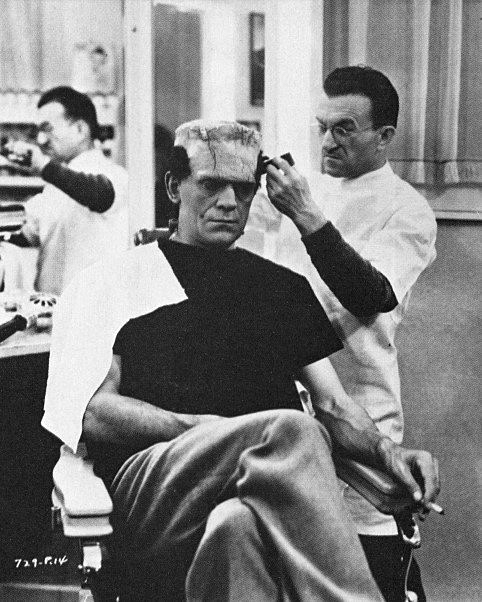
14) Or as I like to call them, "e-NECK-trodes"
One signature addition that the duo concocted were the bolts on The Monster’s neck. However, these are not there to keep his head attached. These bolts are actually the electrodes needed to transfer electrical energy during reanimation.
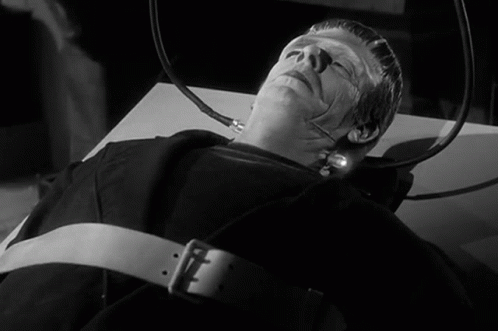
Think of it like the gothic 1800s version of jump-starting your car.
15) Luckily, this Monster Doesn't Speak
In order to achieve The Monster’s sunken cheek corpse look, Karloff actually removed his partial bridgework. This part of the design would be dropped for the sequel, The Bride of Frankenstein, when it became necessary for The Monster to be able to speak.

16) Being a Monster is Hard Work
It would take Jack Pierce approximately four hours each day to turn Boris Karloff into Frankenstein’s Monster. Karloff would then spend the long, arduous shoot days wearing a costume that weighed nearly fifty pounds.

17) But like a Friendly Monster
So haunting in his makeup was Karloff that actress Mae Clarke was concerned she might be too frightened to perform in their scenes together.
In the film’s climax, when The Monster attacks Frankenstein’s fiancée, “Elizabeth,” Karloff would wiggle his pinkie finger at Clarke to assure her that under all that monstrous makeup was her good friend, Boris.
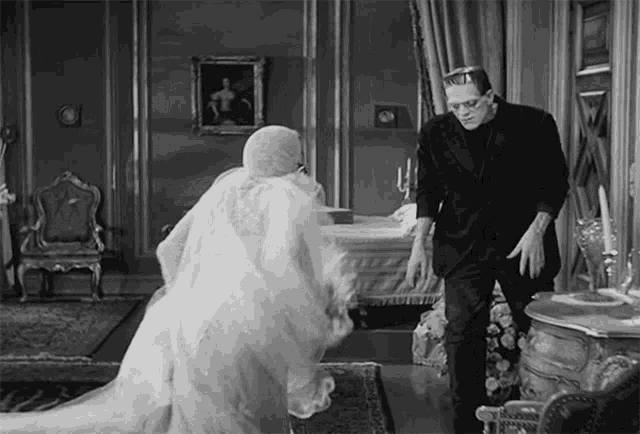
18) Some Looks Do Matter
Now, remember when I said this look was created specifically for the Universal film? Well that means Universal actually holds the copyright to this particular design of Frankenstein’s Monster.
Specifically the green skin, the electrodes on the neck, the flat head, the scarred forehead, and the protruding brow.
So ya know, everything one would associate with Frankenstein.
Anything that originated in Mary Shelley’s novel is in the public domain. But if it didn’t come from the book, somebody owns it.
Speaking of which…
19) Frankenstein's Laboratory
Universal also holds the copyright to both the look of Frankenstein’s laboratory and the method by which The Monster is reanimated.
In the novel, which is mostly told from Victor’s perspective, he keeps the details intentionally vague so no one can recreate his work.
So if your Frankenstein’s lab is filled with Tesla Coils and Jacob’s Ladders, you owe Universal some money.

20) Kenneth Strickfaden
Universal’s laboratory was designed by Kenneth Strickfaden, a set designer and electrician who not only created the electrical effects for the film but body-doubled for Boris Karloff during the sequences that showed electricity arcing over The Monster.
For some reason, Karloff was concerned about the million-volt sparks.

21) Name Swap
But not all of Universal’s reimaginings of Mary Shelley’s gothic novel would stand the test of time. For example, the filmmakers decided to swap Victor Frankenstein’s first name with that of his friend Henry.
The justification was that they felt American audiences in 1931 would be put off by a male lead named “Victor,” finding it to be too “severe” and “unfriendly.”
They’ll let it slide when it comes to desecrating human corpses and grave robbing, but the name Victor…

22) Dirty Deeds
In the scene where Fritz and Henry Frankenstein are doing the aforementioned grave robbing, James Whale had Colin Clive, the actor playing “Henry Frankenstein,” toss dirt at the statue of the Grim Reaper, emphasizing Frankenstein’s lack of respect for death.

23) Little Maria
One of the film’s most controversial scenes is when The Monster chucks poor little Maria into the lake, thinking she’ll float like the flowers.
When it came time to shoot, the crew was concerned that Marilyn Harris, the young actress who played “Maria,” would be afraid of Karloff in his monster makeup.

When Marilyn saw Karloff, she ran right up to him, held his hand, and asked if she could ride with him to the lake.
24) Egg-cellent Bribery
While shooting Maria’s accidental drowning scene, James Whale felt bad asking Marilyn to do multiple takes, so he promised her anything in the world if she could do just one more. All she wanted was one dozen hard-boiled eggs.
Whale gave her two dozen.

25) Theater of the Mind
And after all that, most of the scene was cut from the original release of the film. Deeming it to be too violent, the original edit saw the scene end just as The Monster reached for Maria. However, this censorship backfired and created something moviegoers found far more disturbing.
Since the next time the audience would see little Maria was when her distraught father carried her lifeless body through the town square, they had to use their imaginations to fill in the blanks as to what actually happened to her – most of which was much more horrendous than just being yeeted into the water.

26) Video Home System
The scene wouldn’t be seen in its entirety until 1986 when Universal released the film on VHS.

27) Who is The Monster?
To keep an air of mystery going into the film, Boris Karloff’s name does not appear on the cast list at the opening of the film. The actor portraying The Monster is only credited with a question mark.

However, his name does appear in the end credits.
28) Mary received credit... Sort of.
Someone whose name doesn’t appear is one Mary Shelley. Proving that history repeats itself, even 100 years later, Mary still couldn’t get the proper respect she deserved.
She did get some credit, but only as “Mrs. Percy B. Shelley.”

So…. progress?
29) No Monsters in the Sunflower State
Frankenstein would be released into theaters on November 21st, 1931, and became another instant hit for Universal. However, it wasn’t a smashing success everywhere
The state of Kansas originally banned Frankenstein from its theaters for exhibiting “cruelty and tended to debase morals.”

30) The Censorship Continued
The film was re-released into theatres in the late thirties, but the demands for more censorship led to even more edits. Henry’s line “Now I know what it’s like to be God!” was omitted, called “blasphemous” by people who entirely missed the point.
It was replaced by a jump cut and a clap of thunder.
This YouTube video highlights the censorships of the “It’s Alive!” scene and the Maria Lake scene.
31) Potent Quotables
The line that proceeds it, Henry declaring “It’s alive! It’s alive!,” ranks #49 on the American Film Institute’s 100 Greatest Movie Quotes.
Dracula is also on the list, coming in at #83.

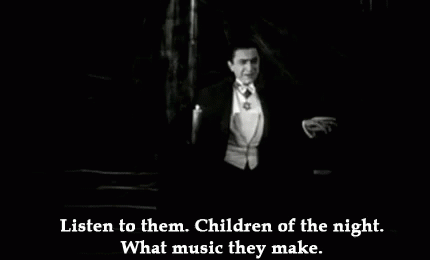
32) The Uncanny
Following the success of Frankenstein, Boris Karloff became such a star in the genre that he began being billed simply as “Karloff” or “Karloff the Uncanny.”

33) Here Comes The Bride
The sequel to Frankenstein, The Bride Of Frankenstein, was released in 1935, with many wrong people of the wrong opinion that it is actually superior to the original.

Since Bride features an incredibly ridiculous scene about tiny people in glass jars, the notion that it surpasses the original in quality is obviously false.
And yes, I know opinions by definition cannot be false, but this is the exception.
34) A Menagerie of Monsters
Boris Karloff wasn’t the only horror icon to play The Monster. In 1942, Lon Chaney, Jr, famous for bringing The Wolf Man to life, took up the role for The Ghost of Frankenstein.
Just one year later in Frankenstein Meets the Wolf Man, Chaney would go back to the role that made him famous, allowing Bela Lugosi to finally get a crack at Frankenstein’s Monster.
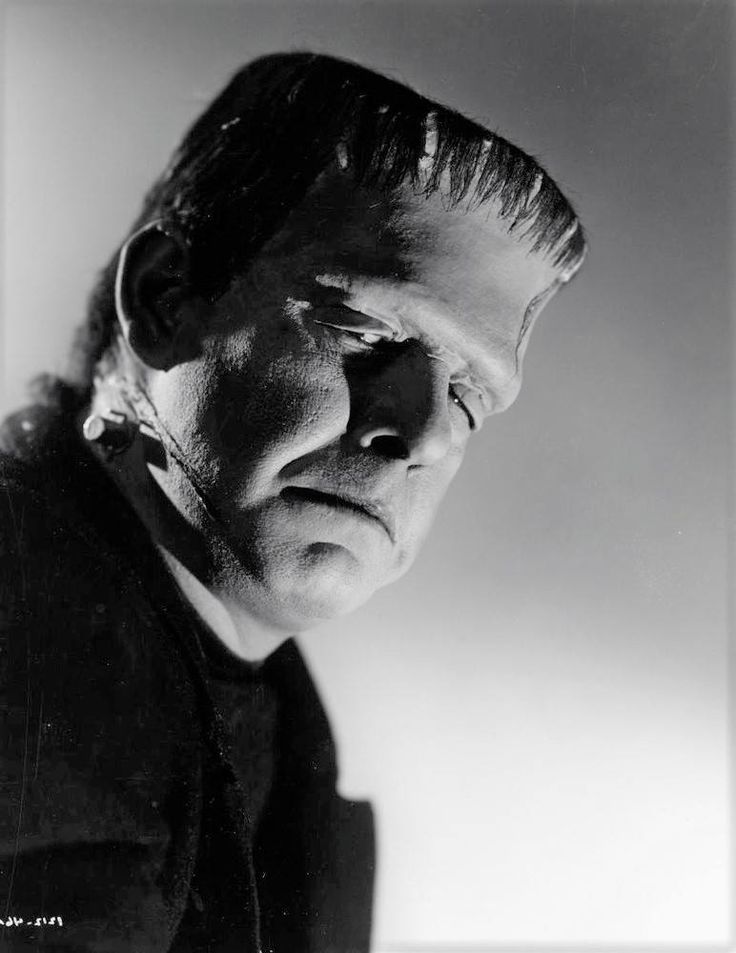
Lon Chaney, Jr. as “The Monster” for The Ghost of Frankenstein (1942).
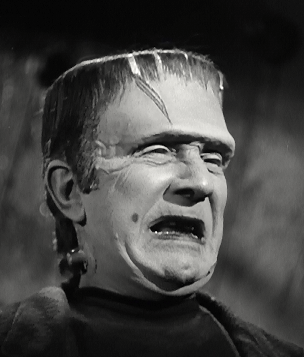
Bela Lugosi as “The Monster” for Frankenstein Meets the Wolf Man (1943).
35) Origin of The Walk
And it was actually Bela Lugosi who originated the “Frankenstein Walk,” the lumbering around with the arms stretched out. This came about due to a continuity error. When the film was shot, The Monster was meant to be blind.
However, this story detail was omitted from the final film.

Larry Talbot (Lon Chaney, Jr.) and The Monster (Bela Lugosi) in Frankenstein Meets the Wolf Man (1943).
36) Karloff's Last Laugh
Producers tried to lure Boris Karloff back to the role for 1948’s Abbot and Costello Meet Frankenstein, but were unsuccessful. “The Monster” was played by the appropriately named actor Glenn Strange.
Karloff did however agree to do publicity for the film, under the condition that he didn’t actually have to watch it.

37) Frankenstein Saved Lives
In 1957, Earl Bakken, a pioneer in the field of medical technology, developed the first wearable battery-powered cardiac pacemaker. So what inspired him to invent this achievement in life-saving technology?
A life-long fascination with Frankenstein.

In his autobiography, “One Man’s Full Life,” Bakken wrote “What intrigued me the most as I sat through the movie again and again, was the creative spark of Dr. Frankenstein’s electricity.”
38) Hammertime
Also in 1957 was the first Frankenstein movie to be made in color. The Curse of Frankenstein was produced by the British film company Hammer Studios, and starred Peter Cushing and Christopher Lee.
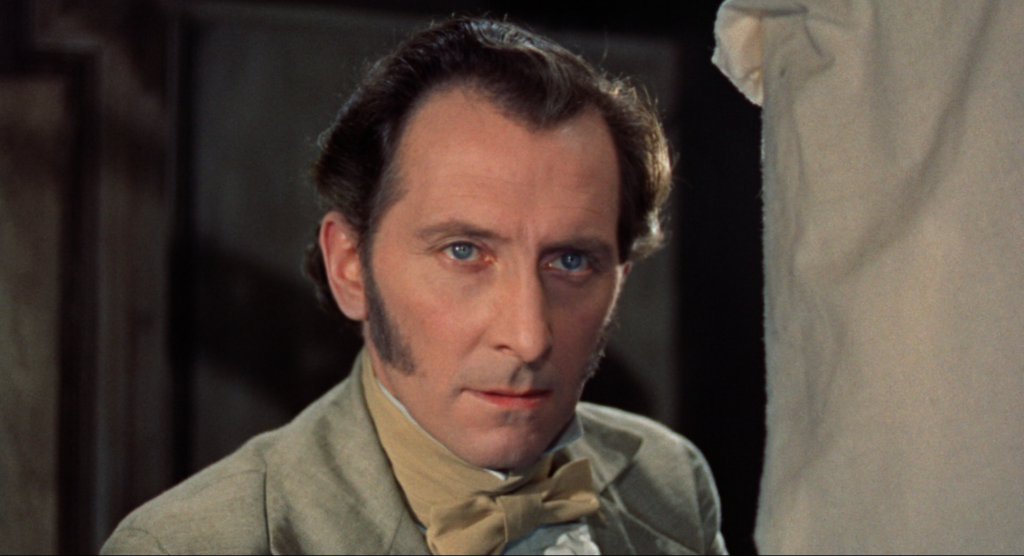
Peter Cushing as “Victor Frankenstein”

Christopher Lee as “The Creature”
As the story goes, Lee stormed into Cushing’s dressing room, complaining that he had no lines. To which Cushing responded, “You’re lucky. I’ve read the script.”
And a life-long friendship was born.
39) Universal Was Watching
The ever-litigious Universal Studios kept a close eye on the production of Hammer’s Frankenstein films.
Not only were they concerned that their copyrighted material may be stolen, but they wanted to ensure that audience wouldn’t be deceived into thinking the two franchises were associated.
This caused Hammer to make many alterations to the script and The Monster’s makeup design.
40) An Uncanny Return
In 1958, Boris Karloff finally returned to the name that made him famous for Frankenstein 1970. However, this time he would be playing the man, not the monster.
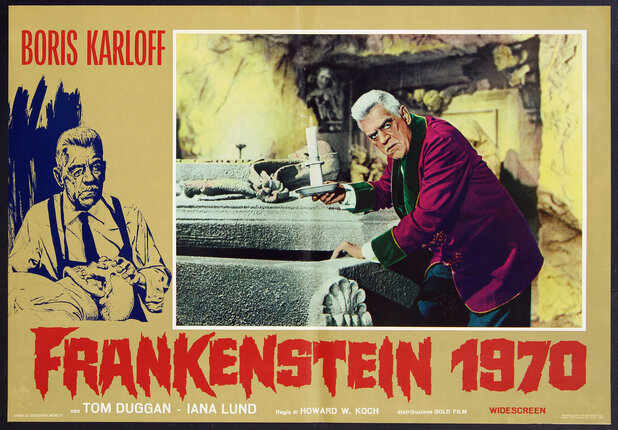
This Dr. Frankenstein was a descendant of the original, and since this was a sci-fi movie in the 1950s, the reanimation process was powered by atomic energy.
41) Suddenly '70s
In 1972, Blacula, the story of an 18th-century African prince-turned-vampire, became one of the highest-grossing films of the year.

This kicked off a wave of horror-themed blaxploitation films that included titles like Black Devil Doll from Hell, Dr. Black and Mr. Hyde, and of course, Blackenstein.
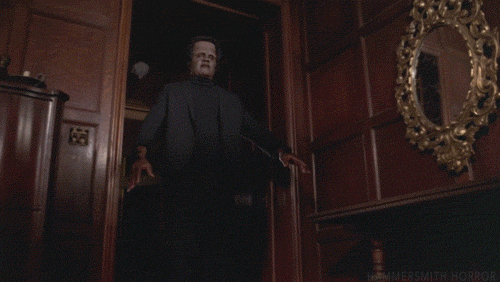
42) What, this old thing?
Over forty years after the release of Frankenstein, the exact same lab equipment that Kenneth Strickfaden had created for the film was reused for Mel Brooks’ classic comedy Young Frankenstein.

When Brooks was in pre-production for the film, he discovered that Strickfaden still had the original machinery stored in his garage.

43) The Monster & The Princess
In 1984, just one year after the release of Return of the Jedi, Carrie Fisher starred in a television adaptation of Mary Shelley’s original novel.
She didn’t play the doctor though, that would have been so awesome the earth would have collapsed into itself. She played Elizabeth.

She’s pretty good in it, you should check it out (after you’ve finished reading this blog.) The whole thing’s on YouTube.
44) Now That's What I Call 90s
The nineties were a big couple of years for Frankenstein. The decade started with “‘The Pope of Pop Cinema” Roger Corman directing Frankenstein Unbound, a film based on a novel of the same name.
This adaptation featured a time-traveling scientist, Mary Shelley documenting events for a future novel, and Raul Julia as “Victor.”
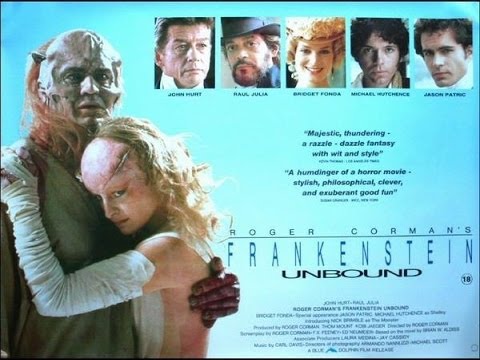
You can find this on YouTube as well.
45) History Repeats Itself

Following the success of Francis Ford Coppola’s Bram Stoker’s Dracula in 1992 (and if you’ve picked up on the pattern you know what’s coming next), it was time for Hollywood to put out a new big-budget Frankenstein film.
This one would be produced by Coppola with Tim Burton pursued to direct and Arnold Schwarzenegger tapped to play The Monster.
As bananas as that film would have been, the deal wasn’t struck and both Burton and Schwarzenegger moved on to other projects.
Burton’s Ed Wood and the Schwarzenegger-led True Lies would be released the same year as Coppola’s Frankenstein film, and considering those are two of the best movies in each man’s respective filmographies, it was probably the right call.
46) Mary Shelley’s Frankenstein
Mary Shelley’s Frankenstein would be directed by and star Kenneth Branagh, who banned the term “monster” from the set.
Robert De Niro’s character was only ever to be referred to as “The Sharp Featured Man.”

47) Well, I liked it.
After viewing a rough cut of the film, Francis Ford Coppola wanted to cut the first half an hour. When Branagh refused, Coppola publicly denounced the film.
Mary Shelley’s Frankenstein was released in 1994 to mixed reviews and currently sits at a rotten 42% on the Tomatometer.
But if nothing else, at least Mary’s name is on the marquee.
48) But it's #1 in My Heart
In 1998, the American Film Institute ranked Frankenstein #87 in its “Top 100 Greatest American Movies.” However, when the list was updated in 2007, Frankenstein didn’t make the cut.
Twenty-three new movies were added that year, most of them universally despised films like Lord of the Rings, Titanic, and Toy Story.

Trash.
49) A Pricey Piece of History
Pieces of original Frankenstein memorabilia are big ticket items among collectors, with one of the most valuable movie posters in existence being the incredibly rare Frankenstein six-sheet.
In general, six-sheet posters are immensely valuable to collectors because of how scarce they are. Not only are they enormous – six times the size of a normal poster, as the name implies – but they were often glued to building exteriors.
The Frankenstein six-sheet is owned by a private collector and is estimated to be worth over $600k.
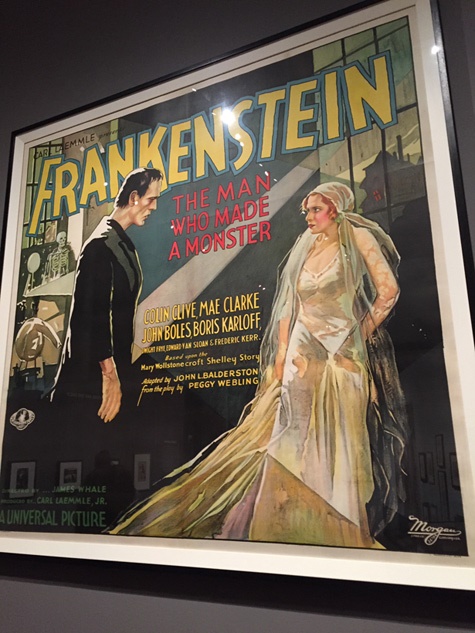
50) A Holiday for Horror
And finally, the very-real holiday of Frankenstein Day is recognized every August 30th, commemorating Mary Shelley’s birthday. In 2022, she would have been 223-years-young.
If you missed this year’s celebration, don’t worry, you can still celebrate Frankenstein Friday, which is observed every year on the final Friday in October.

Want more of my thoughts on Frankenstein? Check out my in-depth video about the classic Gothic novel’s influence on the science fiction genre!
Is there any other classic you think deserve a deep dive? Dracula is the obvious choice, but what about The Invisible Man or The Creature from the Black Lagoon?
Or maybe some cult classic monsters like Critters or C.H.U.D.s? That’d get some clicks, right?
Hit me up on the socials and let me know!

